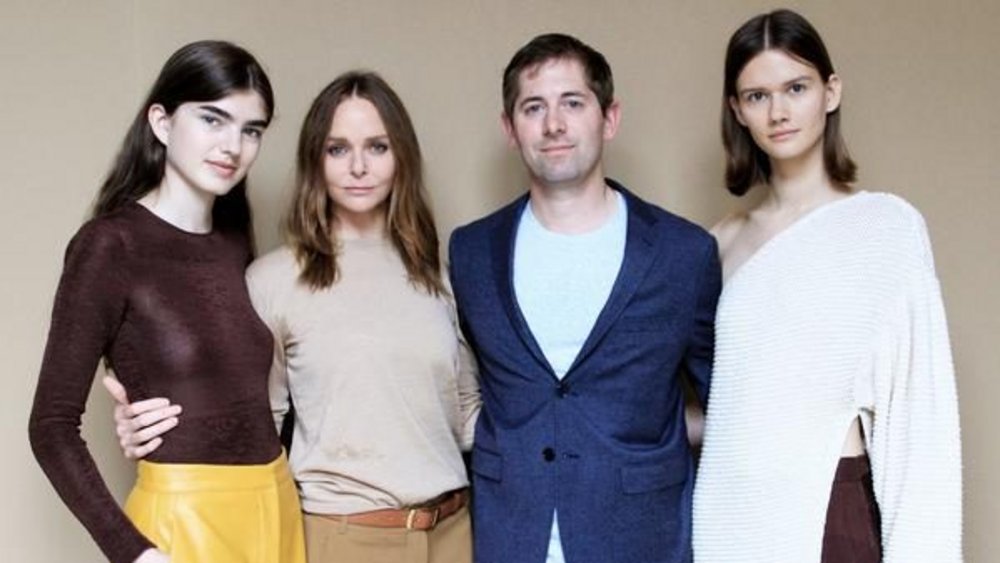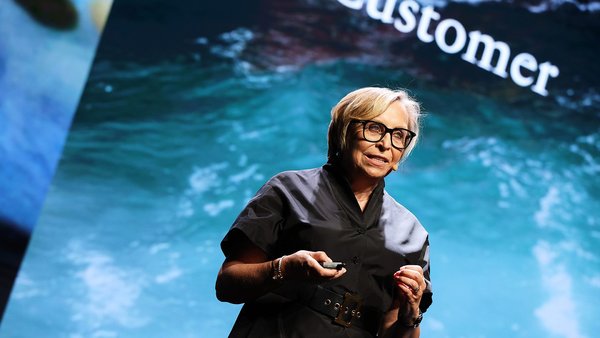Interview: Jamie Bainbridge, VP product development, Bolt Threads /
Is the future of apparel bioengineered? We speak to biotech startup Bolt Threads' Jamie Bainbridge to find out

Fashion is the world’s second-most polluting industry, beaten only by oil. It is also the second-largest user of the world’s water, just behind agriculture. These facts are well-established, but until recently, most clothing brands didn't seem concerned about the industry's messy practices. However, that is all beginning to change. The rising importance of transparency in provenance, processes and pricing means that today's consumers demand not only quality products, but ethical ones too. In fact, The Business of Fashion and McKinsey report that sustainability should be one of the top priorities for brands in 2018.
One player redefining the way fashion retailers should think about sustainability and new materials is Bolt Threads. Founded in 2009, the company combines its proprietary technology and revolutionary bioengineering concepts to create sustainable, high-performance materials.
Its first fabric is bioengineered spider silk – a material made by humans, not arachnids. To create it, Bolt Threads' scientists closely studied silk proteins found in nature and recreated them in a lab by inserting genetically-engineered DNA into yeast and then fermenting the mixture. The man-made substance is then spun into silk. This new material has piqued the interest of brands like Patagonia and Stella McCartney, with which Bolt Threads has partnered to show that high-quality performance and sustainability don’t have to be mutually exclusive.
We sat down with Jamie Bainbridge, VP of product development at Bolt Threads, to hear more about how the company is changing apparel and beyond.
Why did you decide to create spider silk in a lab? What other materials are you looking to tackle with the technology?
When our founders started the company they built a technology platform that allows us to make any functional protein that's found in nature. One of those protein groups is silk, which can be produced by animals like mussels, bees, ants, silkworms and spiders.
Spider silk has always been a holy grail in this area and so they [the founders] decided to work on spider silk first. Yes, it's the first product, and yes, there will be more products made of completely different proteins that do very different things in the future.
How is your process different from the way we produce things right now?
The way we produce things right now is basically by extracting things from the ground that can never be replaced, especially in the textile industry. What we do is use microbes as our factory and we teach those microbes to make what we want them to make by using recombinant DNA that we design, inspired by spider silk. We implant that DNA into our microbes, which happen to be a yeast, and that gives them the information on what their job is to produce.
This is exactly the same process that goes on when you make beer. When you make beer, you feed the yeast sugar and they make alcohol. We feed the yeast sugar and they make silk. Exactly the same process, but we're giving them different information so they make a different product.
What type of products can you make with this material? I know that you have created a necktie and a dress with Stella McCartney, but can you give me an example of the range of things that can be made?
Fibres come in many different shapes and sizes. They can be spun into different types of yarns that lead to completely different fabrics, so there is an endless palette of possibilities. You have to start somewhere, and so what you've seen so far are the first fibres that we brought out to the public. We have not even scratched the surface of what we can do.
When do you think the cost of these types of products will become more affordable for consumers?
In the world of bioengineering the real trick to making it affordable is to get it to scale. Lots of people can make things using microbes at the test tube scale, but very few companies have ever taken it to an industrial scale. We are currently at what we call a 'pilot scale', which is still pretty small and we're doing our learning along the way. But we have been able to scale the beginnings of our process to a very large scale.
We are now producing silk at a 100,000-litre scale. So once we get the fibre spinning up to that same scale, we will be able to release it into the market in fairly large quantities and the price will probably be competitive with silk.
I don't personally look at sustainable products as a luxury, I look at them as a necessity. But it's going to take a while before consumers make the connection. I think everything in our world is too cheap right now, people ought to understand what things really need to cost in order for them to be good for us.

We have seen other companies trying to bring new fibres to market, but it has proven to be quite a challenge. How is Bolt Threads different?
Most companies trying to bring a fibre to the market are made up of people who are from the science end of the business. But we also have a major focus on the consumer and marketing sides of what we're doing, so we can go all the way from R&D through to very interesting retail consumer thinking. That makes us quite special.
I run into companies over and over again who have an incredible product and absolutely no idea how to get it to market. And they stumble around and partner with the wrong people, and before they know it, they're gone.
You have partnered with brands, but you also produce your own products. Do you focus more on B2B or B2C, or is it mixture of both?
We definitely want to focus on B2C. The economics are no longer there for a company that wants to become an ingredient brand for something else in the world of textiles. Creating our own brands and putting ourselves out into the world directly to consumers is by far preferable way to go.
That involves a number of different strategies, one of which is to partner with companies like Stella McCartney. She has a very similar ethos to ours, so we're very compatible. We won't be doing a lot of that though, we will be very restrained in our partnerships. We also won’t be selling our fibre to brands, like most textile companies would.

Your business model is focused on acquisitions and long-term brand partnerships, can you tell me a little bit more about that?
Yes. We acquired Best Made Company [an outdoor gear retailer] in 2017. They have a really strong consumer base and are perfectly positioned to tell a material story. For us, those things really added up to, 'Wow, this could be a great segue for us to put products out into the market through them.' Their whole thing is, 'We only want to sell products we really believe in,' and those products can be anything. They sell a number of home goods products, books, apparel, tools. They haven’t limited themselves as to what they want to put out and we love that; it gives us lots of opportunities.
We will be looking for other small brands like them to acquire potentially, or you might see us start up brands of our own. That's yet to be determined.
Are you targeting a specific type of consumer with your products?
Not one specific one. I think we will have a number of different focuses when it comes to consumers because we can make extremely different products. We will definitely stay in the quality end of the market, we will never become a commodity brand, but that's the only limitation we have at the moment.
What is the ultimate vision for the company?
To make better materials for a better world. And that means combining innovation with the performance characteristics we give materials, along with a cleaner way to make those materials.
Want more of the same? /
We don’t just write about best-in-class campaigns, interviews and trends. Our Members also receive access to briefings, online training, webinars, live events and much more.







